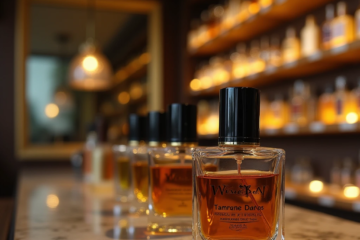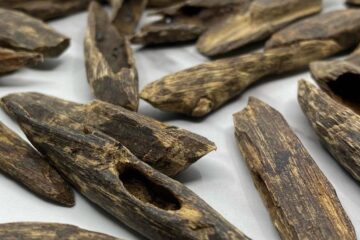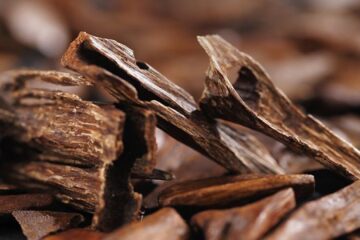Vietnamese oud, also known as agarwood or calambac, has a rich and storied heritage that stretches back thousands of years. It is renowned for its unique fragrance and cultural significance, making it highly sought after in the global market. This article explores the history, conservation efforts, key regions, and international appeal of Vietnamese oud.
History of Vietnamese Oud
The use of agarwood in Vietnam dates back to the third century CE, with records in the Chinese chronicle «Nan zhou yi wu zhi» (Strange Things from the South) by Wa Zhen of the Eastern Wu Dynasty, which documents the collection of agarwood in the mountains of central Vietnam. By the 16th century, Vietnamese rulers like Nguyễn Hoàng actively promoted the trade of agarwood with neighboring countries, particularly China and Japan. During this period, varieties such as Calambac (known as «kỳ nam» in Vietnamese) and trầm hương were highly valued. The Nguyễn Lords even established a royal monopoly over the sale of Calambac, which became a significant source of revenue.
Important Vietnamese Agarwood Forests and Conservation Efforts
The most significant Vietnamese agarwood forests are predominantly located in the central and southern regions of the country. Key areas include:
Southern Coastal Regions: Adjacent to the Cambodian border, with notable locations like Phú Quốc Island.
Central Highlands: Regions such as Hà Tinh, Kon Tum, Quảng Nam-Da Nang, Bình Định, and Gia Lai.
Coastal Belts: Areas like Quảng Ninh, Hà Bắc, Hòa Bình, and Tuyên Quang.
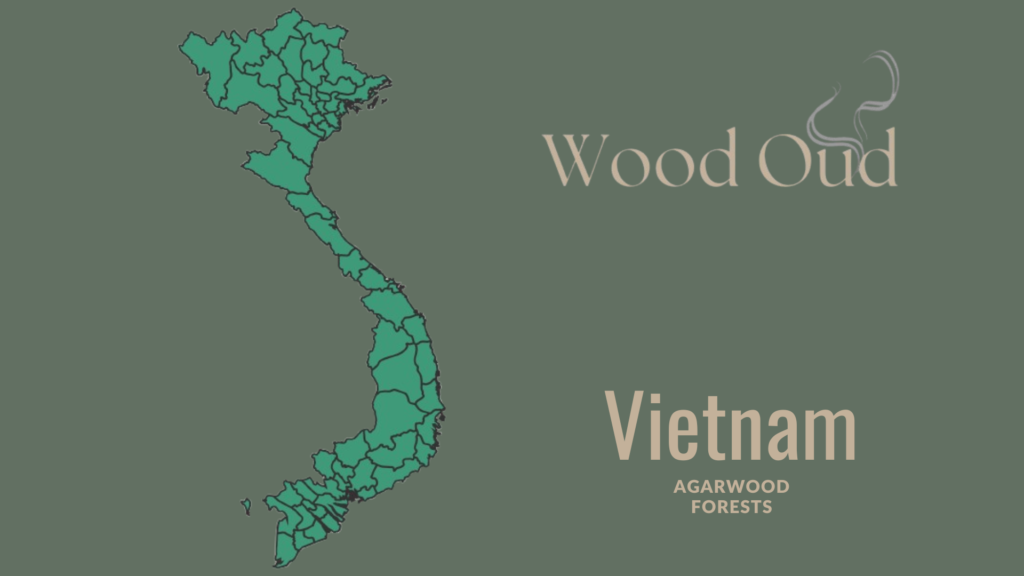
The formation of oud resin occurs as a natural defense mechanism when Aquilaria trees are infected by certain fungi or experience physical traumas. Unfortunately, these natural forests are increasingly threatened by over-exploitation. To address this, the
The Vietnamese government has implemented several conservation strategies:
1. Legal Protections: Since 1996, Aquilaria crassna, the primary species from which agarwood is derived, has been classified as endangered and is protected under the Vietnam Red Data Book and CITES regulations.
2. Community Initiatives: Local communities, particularly in provinces like Hà Tinh, actively collect seedlings from natural forests to grow in home gardens and plantations. This initiative provides income for locals while reducing pressure on natural populations.
3. Vietnam Tree Seed Project: This project promotes the use of Aquilaria crassna in non-timber plantations as an ex situ conservation model. For example, a breeding orchard in Bố Trạch district, Quảng Bình province, helps provide improved seed sources for sustainable cultivation.
4. Sustainable Practices: Regions like Quảng Nam, Bình Định, and Kon Tum are at the forefront of expanding agarwood farms, implementing agroforestry systems, and promoting the use of microbial technology to induce agarwood formation. Companies such as Truc Lam Quan Tue are developing chemical-free agarwood products through innovative and sustainable methods.
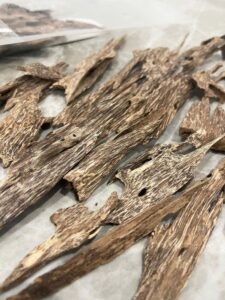
Names Associated with Vietnamese Oud
Vietnamese oud is known by several names that reflect its cultural and regional importance:
Calambac: Often used to describe high-quality agarwood, known as «kỳ nam» in Vietnamese.
Trầm hương: A variety of agarwood that is similar to Calambac but slightly harder and more abundant.
Agarwood: The general term used worldwide for the resinous heartwood of infected Aquilaria trees.
Domestic and International Markets for Vietnamese Oud
Domestic Markets
In Vietnam, agarwood holds significant value and is used in various forms, including traditional medicine, incense, and as a luxury item. Major domestic markets include:
Hội An: Historically a major center for the trade of Calambac and other agarwood varieties.
Local Markets: Various markets throughout regions where Aquilaria trees are abundant.
International Markets
Vietnamese oud is highly prized worldwide for its distinctive fragrance. Key international markets include:
China and Japan: Historical trading partners with Vietnam, with trade records dating back to the 16th century.
Middle East: Major consumers of agarwood, using it extensively in perfumery and incense.
Europe and North America: With the rise of oud in perfumery, these regions have also become significant markets.
International Companies Using Vietnamese Oud
The unique fragrance of Vietnamese oud has attracted numerous international perfume houses. Notable brands incorporating this oud into their products include:
Chanel: Featuring oud in the prestigious Les Exclusifs de Chanel collection.
Dior: Known for Oud Ispahan, part of the La Collection Privée Christian Dior.
Givenchy: Offers Oud Flamboyant, showcasing the depth of Vietnamese oud.
Guerlain: Blends oud in perfumes like Santal Royal and Oud Essentiel.
Armani Privé: Features several oud-based scents that highlight the unique qualities of Vietnamese agarwood.
Other brands, such as Tom Ford, Juliette Has a Gun, and Yves Saint Laurent, have also popularized the use of oud in Western perfumery. These brands blend Vietnamese oud with other woody notes like cedar, sandalwood, and vetiver to create complex and sensual fragrances, underscoring the demand and appeal of this exquisite ingredient.
Conclusion
The Vietnamese oud industry reflects a blend of ancient tradition and modern sustainability. While conservation efforts are crucial to protect natural resources, the thriving cultivation and trade of Vietnamese agarwood have cemented its status as a globally recognized luxury. The combined efforts of local communities, government initiatives, and international appreciation ensure the long-term sustainability and global prominence of Vietnamese oud.

